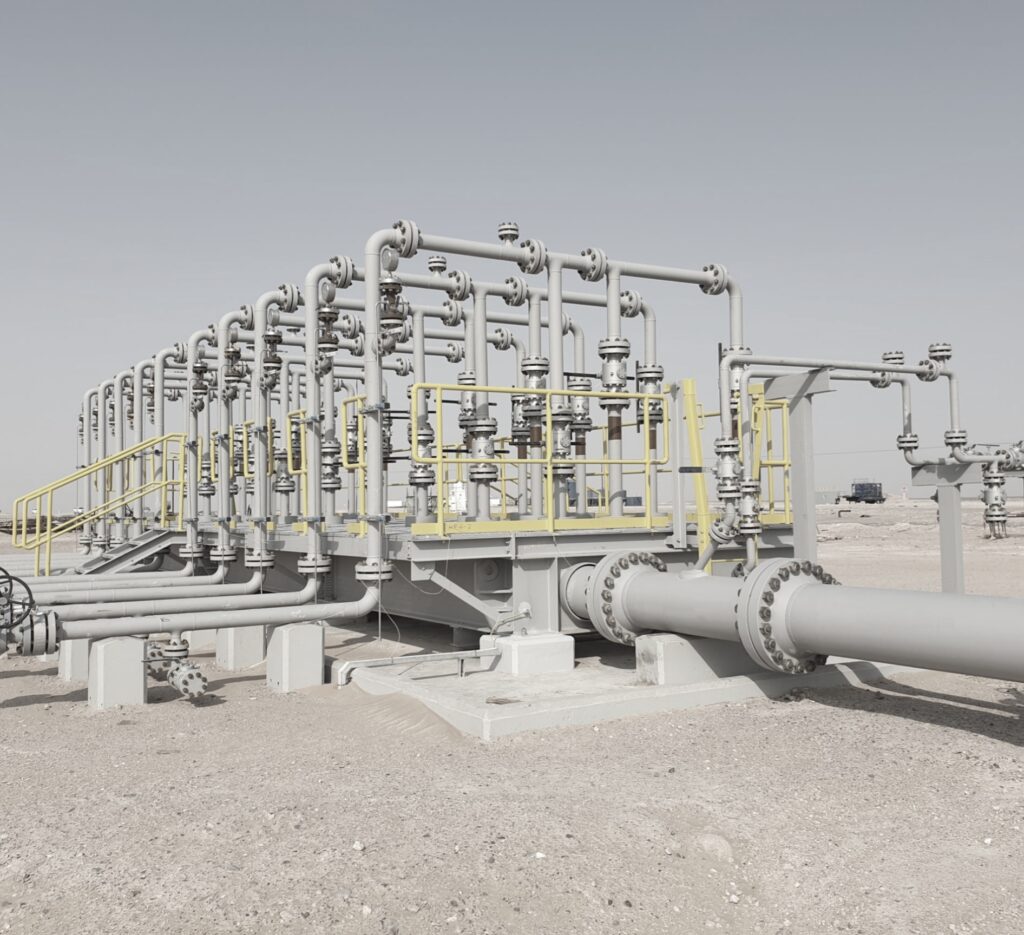Table of Contents
What Is Pipe Manifold?
A pipe manifold is a specialized pipe fitting that serves as a central hub for multiple smaller pipes to converge. It can be in the form of a wide or larger pipe, channel, or other type of device that enables multiple inputs or outputs to be joined together. The primary function of a pipe manifold is to simplify the connection process by providing a single point for multiple pipes to connect to, rather than having multiple connections scattered throughout a system. This can improve organization, efficiency, and reduce the risk of leaks or other issues associated with multiple connections.

Description
A piping manifold is an essential component in any fluid distribution system. It acts as a hub where multiple pipes converge and are directed to various locations.
These systems can be made of various materials such as metal, plastic, and even glass. The manifold is designed to handle different pressure and temperature conditions, depending on the application.
The manifold comprises inlet and outlet ports that connect to the main pipe and smaller pipes respectively. Control valves regulate the flow of fluid through the system.
A piping manifold can be used for various purposes. It can distribute fluid from a main pipe to several smaller pipes, control the flow of fluid to different parts of a building or industrial facility, or isolate a section of a pipe system for maintenance or repair.
Advanced manifolds may even feature pressure gauges, temperature gauges, and other monitoring devices to closely measure the flow and condition of the fluid. This feature helps in ensuring proper functioning of the system.
Applications of Piping Manifold in Various Industries
Piping manifolds are commonly used in the oil and gas, HVAC, plumbing, and industrial process piping systems. They can be found in different settings such as buildings, ships, oil rigs, pipeline systems, and various industrial facilities.
The Role of Piping Manifold in Piping Systems
A piping manifold acts as a central hub in a piping system, distributing fluids or gases to multiple branches or locations. The purpose of a piping manifold is to control and distribute the flow of fluids (liquids or gases) in a piping system. It also provides a convenient location for connecting and disconnecting pipes, valves, and other components. Manifolds can also be used to control pressure and temperature, and to make maintenance and repair of the piping system easier.
Designing a Piping Manifold: Key Considerations
When designing a piping manifold, the following steps should be taken:
- Identify the fluid or gas that will be flowing through the manifold and its properties, including viscosity, density, and flow rate.
- Determine the number and location of branches or outlets that the manifold will need to distribute the fluid or gas to.
- Select appropriate materials for the manifold and its components, taking into consideration factors such as corrosion resistance, pressure and temperature ratings, and compatibility with the fluid or gas.
- Determine the appropriate pipe size, flow rate, and pressure drop for the manifold based on the fluid or gas properties and the number of branches or outlets.
- Choose the type of valves and controls that will be used in the manifold, such as ball valves, gate valves, or globe valves.
- Create a detailed layout and drawing of the manifold, including the location of pipes, valves, and other components.
- Consider safety and maintenance aspects, ensuring that the manifold is designed to be easily accessible for maintenance and repair and that it meets all relevant safety codes and regulations.
- Consult with the appropriate professionals and conduct pipe stress analysis, thermal analysis, and hydraulic analysis as needed.
- Compliance with standard codes and regulations that may apply to the design and fabrication of the manifold.
Difference Between Header And Manifold In Piping
Check out the below table to know all the differences between header and manifold.
| Feature | Header | Manifold |
|---|---|---|
| Definition | A large pipe or tube that collects fluid from multiple sources and sends it to a central location. | A device that splits the fluid flow into multiple smaller streams or combines multiple fluid streams into one. |
| Example | In a heating system, multiple smaller pipes bring hot water to a header, which then sends the hot water to different parts of the building. | In a plumbing system, a manifold might be used to control the flow of water to different fixtures in a building. |
| Flow direction | Incoming | Outgoing |
| Number of sources | Multiple | Multiple |
| Number of destinations | One | Multiple |
| Location in pipeline | Beginning/End | Specific point |
| Commonly used in | Heating, cooling, and plumbing systems. | Plumbing, HVAC, and industrial piping systems. |
| Purpose of usage | To collect and centralize the flow of fluids. | To control and distribute the flow of fluids. |
Summing Up
Pipe manifold is a piping system that plays a vital role in the pipeline industry by controlling the flow of fluids by either splitting or combining it at a specific point. It is a crucial component in any fluid-handling system, and its proper selection, design, and installation are essential for efficient and safe operation.
